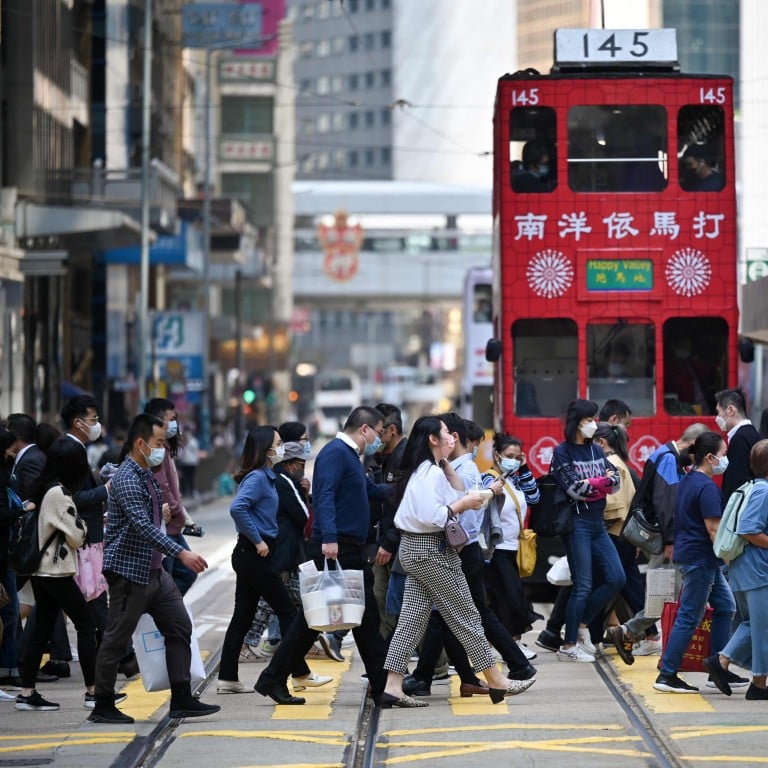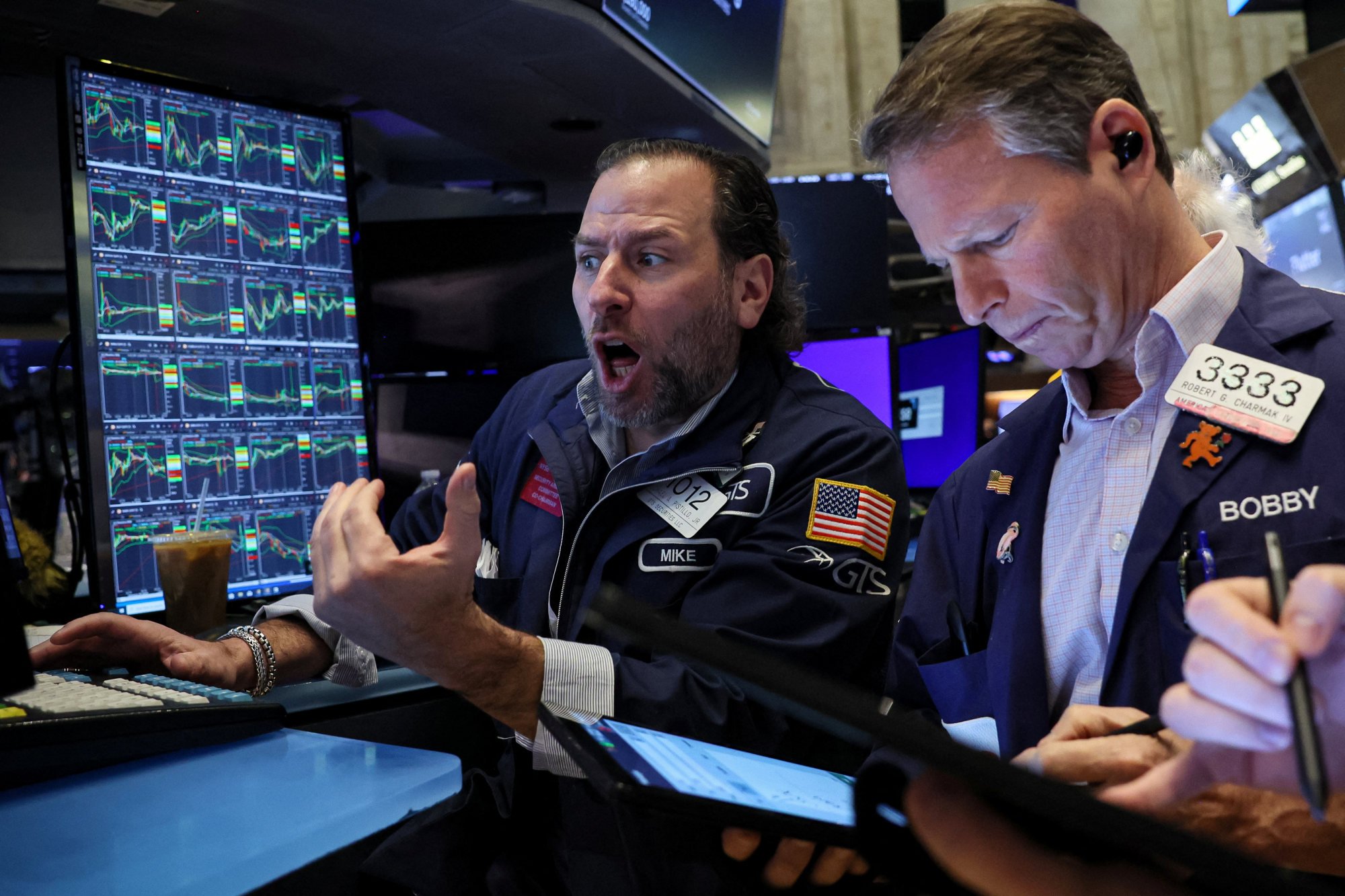
Hong Kong’s banks hold prime rates steady after Fed’s unanimous vote to ‘keep options open’ on when to start cutting the cost of money
- HSBC, Hang Seng Bank and Bank of China (Hong Kong) kept their prime lending rate unchanged at 5.875 per cent, paying 0.875 per cent per annum for deposits
- Standard Chartered kept the interest it charges its best customers at 6.125 per cent, paying 0.875 per cent for deposits
Hong Kong’s banks said they would keep their prime rates unchanged in line with the city’s monetary authority, offering a breather to businesses and mortgage borrowers as the economy struggles to crawl out of a stubborn slump.
HSBC, its Hang Seng Bank unit and Bank of China (Hong Kong) kept their prime lending rate unchanged at 5.875 per cent, paying 0.875 per cent per annum for deposits. Standard Chartered kept the interest it charges its best customers at 6.125 per cent, paying 0.875 per cent for deposits.
“We remain upbeat on the potential for stocks and fixed income to outperform cash this year,” said Tai Hui, APAC chief market strategist of JPMorgan Asset Management in a statement after the Fed decision. “Since we still see the US achieving a soft landing as the most likely scenario, we believe investors should remain invested.”

Fed Chair Jerome Powell took a circumspect tone in his press conference after the meeting of the Federal Open Market Committee (FOMC), indicating that the Fed is in no rush to reduce rates.
“We are not declaring victory at all,” he told reporters in Washington DC, adding that the central bank does not think it would be “appropriate to reduce the target range until it has gained greater confidence that inflation is moving sustainably toward 2 per cent.”
That sent stocks skidding in the US, as traders who were betting for cuts to commence in March ran for cover. The S&P 500 index fell 1.5 per cent, marking the sharpest one-day fall this year.

“Powell emphasised that recent data leads him to believe that a first rate cut in March is not likely, suggesting that the Fed will be cautious about cutting interest rates prematurely if growth remains strong and labour markets remain tight,” Hui of JPMorgan said.
The HKMA reiterated its warning to the public about betting on future rate cuts.
This shift in expectations has reshaped the market landscape, with rate cuts from the Fed now anticipated from May, based on future interest rate prices, said Luca Santos, currency analyst ACY Securities.
The HKMA has followed the Fed’s monetary policy in lockstep since 1983 to preserve the local currency’s peg to the US dollar under the city’s linked exchange rate system.
The decision to hold rates steady was hardly a surprise, with 98 per cent of traders expecting no change, while the rest priced in a 25-basis-point cut, according to odds calculated by CME Group based on Fed fund futures. The Fed’s open market committee (FOMC) next meets on March 19 and 20.
Hong Kong’s benchmark Hang Seng Index closed 0.5 per cent higher, its first advance in three days.
Futures traders responded to Powell’s latest statements by decreasing their bets on Fed rate cuts in March. Now only 34.5 per cent expect the first rate cut in March, while 100 per cent expect a rate cut in May.
Hong Kong’s banks post bumper 2023 profits as rates swell margins
US inflation slowed to 3.4 per cent in December, from the peak of 9.1 per cent in mid-2023. The hike in consumer prices was still faster than the Fed’s mandate to keep it at 2 per cent, but had slowed enough to give the capital markets cause for cheer.
That cut may commence in the second half, according to Franck Dixmier, the global chief investment officer of fixed income at Allianz Global Investors.
“We believe it is premature for the Fed to contemplate a change in its monetary policy,” Dixmier said before the FOMC’s decision. “Despite the massive tightening of monetary policy over the past two years, growth remains surprisingly resilient. The soft, or no landing, scenario that avoids a recession seems to be materialising.”
Fed’s attempt to turn inflation tide leaves Asian economies exposed
Hong Kong’s commercial banks raised their prime rate five times since September 2022 by a total of 87.5 basis points.
Hong Kong’s one-month interbank offered rate (Hibor), fell to 4.5896 per cent on Wednesday, from 5.5325 per cent in December. Three-month Hibor dropped to 4.7083 per cent from 5.5536 per cent over the same period, according to data published by the Hong Kong Association of Banks.
The HKMA last tightened in July, lifting the base rate by 25 basis points to 5.75 per cent, the highest level since December 2007. In total, the base rate has risen by 525 basis points since March 2022, even while Hong Kong’s economy was mired in a recession.
The city’s government in November lowered its full-year forecast for economic growth to 3.2 per cent, from an earlier forecast range of 4 to 5 per cent, citing risks from worsening external environment, heightened geopolitical tensions and high interest rates.

